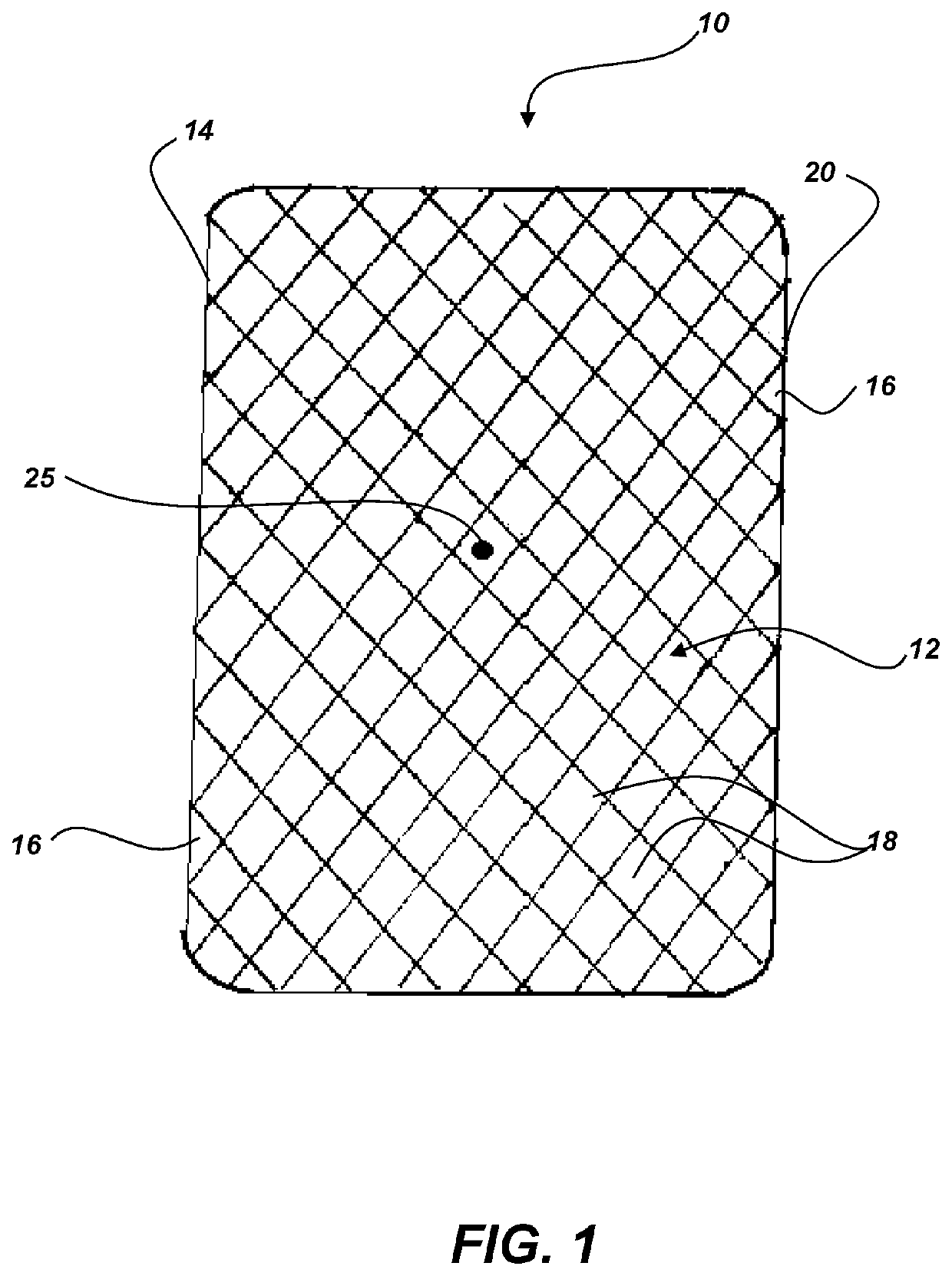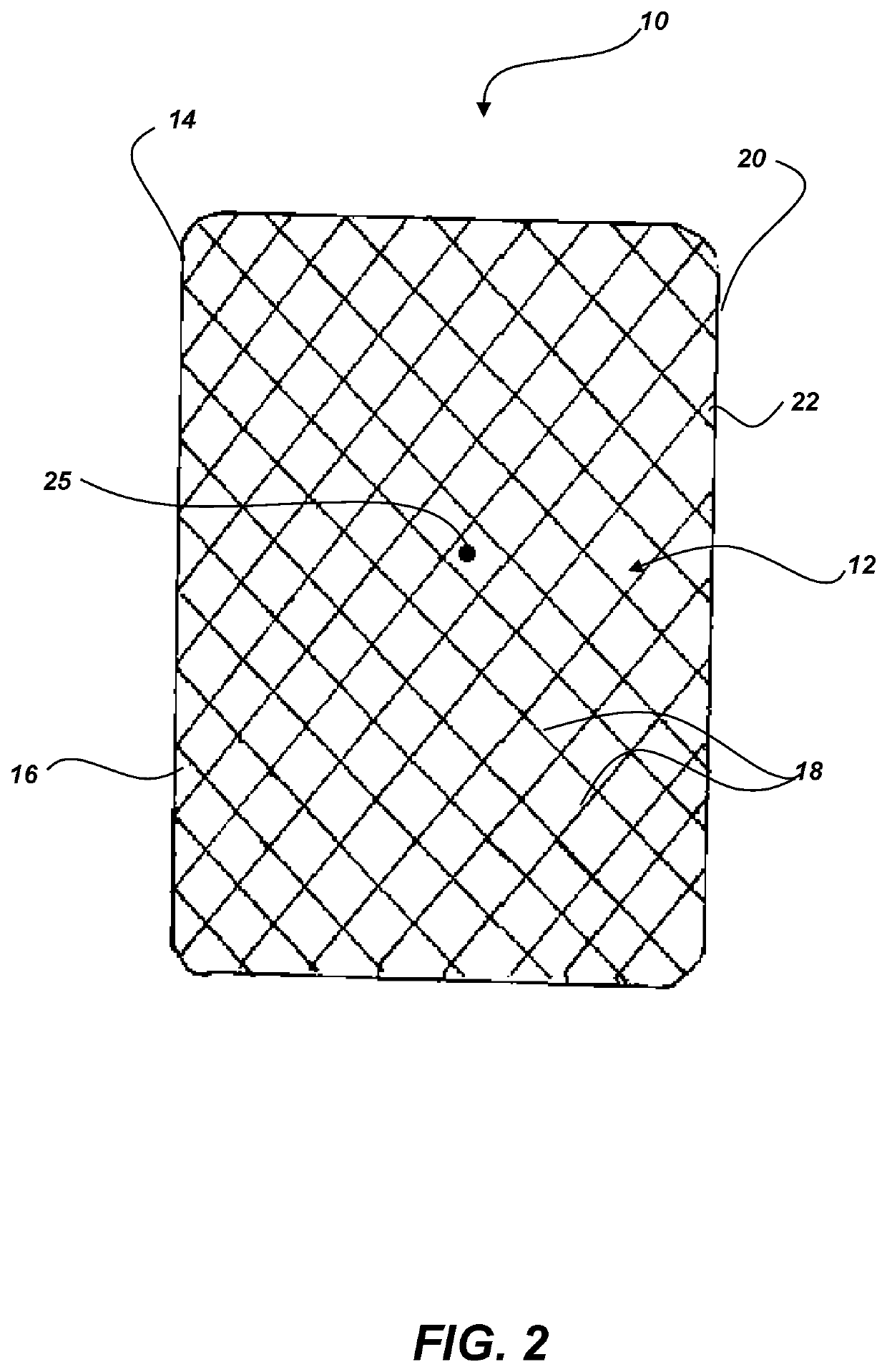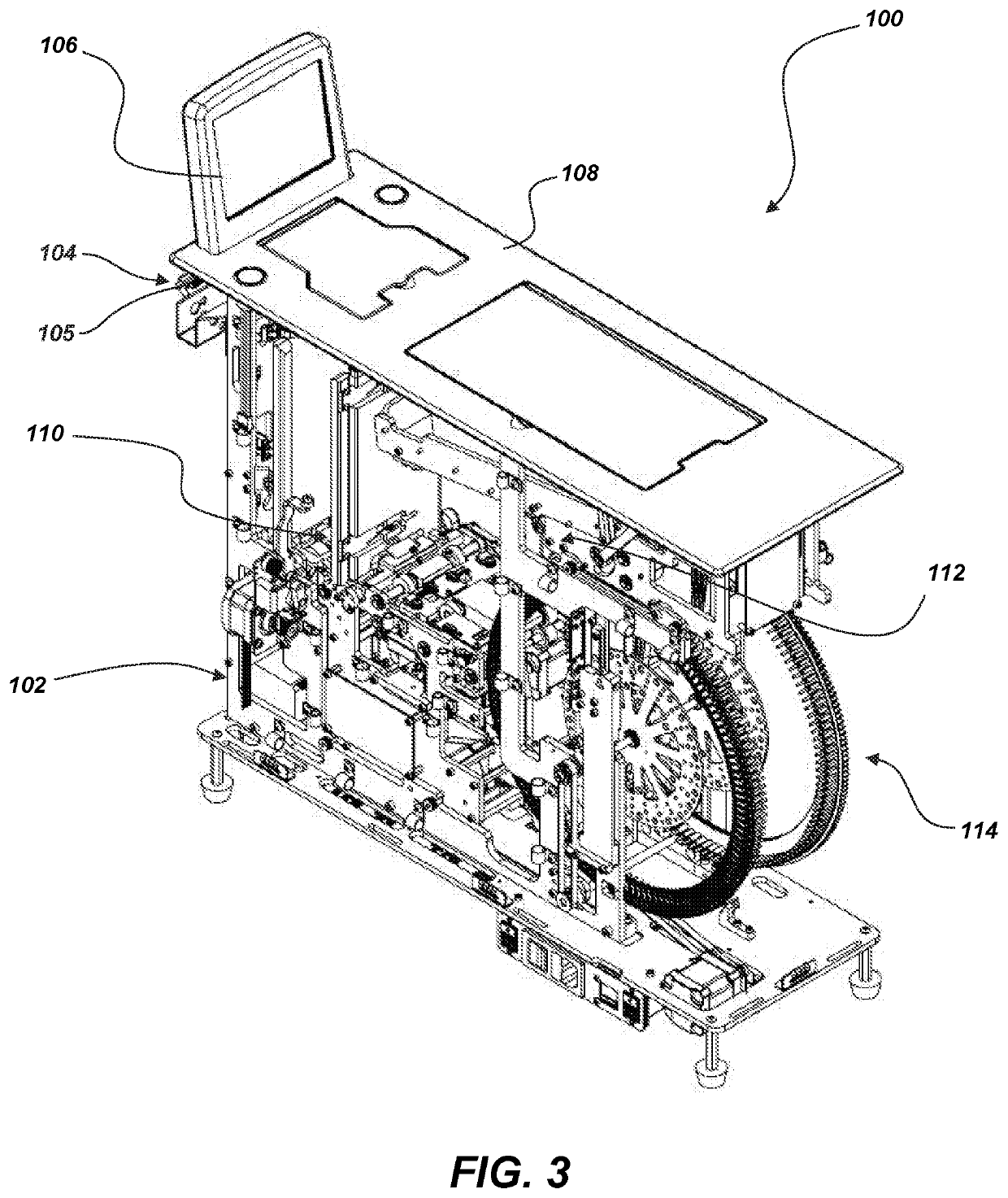Card-handling devices and related methods, assemblies, and components
a technology of card-handling devices and components, applied in the field of card-handling devices and related assemblies, components, and methods, can solve the problems of increasing the actual playing time, reducing casino revenue, and increasing the speed of shuffling and dealing
- Summary
- Abstract
- Description
- Claims
- Application Information
AI Technical Summary
Benefits of technology
Problems solved by technology
Method used
Image
Examples
embodiment 1
[0164] A method of altering an orientation of cards being shuffled in an automatic card shuffler, comprising: providing an automatic card shuffler with a user display; a card intake, a card outlet, a card-shuffling apparatus, a card path between the card intake and the card output, a card-imaging system, at least one processor configured to control the card-imaging system, the user display, and to operate the card shuffler, wherein the card-shuffling apparatus comprises multiple compartments; receiving a plurality of cards in the card intake, the cards arranged in a stack wherein cards are generally arranged with card faces in a face to back orientation; automatically feeding each card individually from the stack along the card path and inserting the card into one of the multiple compartments of the card-shuffling apparatus; reading card face information of each card as the card is being fed with the card-imaging system; identifying unreadable cards, wherein unreadable cards include...
embodiment 3
[0166] The method of Embodiment 1, further comprising individually feeding the plurality of cards along a card path in a face-down orientation.
[0167]Embodiment 4: The method of Embodiment 1, further comprising stacking at least some of the plurality of cards in a substantially horizontal stack, with card faces in a substantially vertical plane.
[0168]Embodiment 5: The method of Embodiment 1, further comprising shuffling between 8 and 10 decks of cards with the card-shuffling apparatus.
embodiment 6
[0169] A card-handling device comprising: a card intake configured to receive playing cards; a card output configured to provide at least one of the playing cards; a playing card-shuffling apparatus positioned along a card path through the card-handling and configured to randomize at least some of the playing cards, the playing card-shuffling apparatus comprising multiple compartments; and a card-imaging system positioned along the card path and configured to image a surface of the playing cards; wherein the card-imaging system is configured to recognize card face information and identify one or more unreadable playing cards, wherein the one or more unreadable playing cards comprise playing cards that do not include card face information on the surface of the playing cards oriented toward the card-imaging system; wherein the playing card-shuffling apparatus is configured to receive the one or more unreadable playing cards in at least one designated compartment selected from the mult...
PUM
 Login to view more
Login to view more Abstract
Description
Claims
Application Information
 Login to view more
Login to view more - R&D Engineer
- R&D Manager
- IP Professional
- Industry Leading Data Capabilities
- Powerful AI technology
- Patent DNA Extraction
Browse by: Latest US Patents, China's latest patents, Technical Efficacy Thesaurus, Application Domain, Technology Topic.
© 2024 PatSnap. All rights reserved.Legal|Privacy policy|Modern Slavery Act Transparency Statement|Sitemap



